When is the best time to visit Costa Rica? Here’s how to decide
When travelers dream up a visit to Central America, most of the time, Costa Rica is the first country on their mind. This is because, despite its small size, Costa Rica is home to variety of towns, climates, wildlife species and activities, both in the ocean and on land. The country is also home to cultural and historical attractions, luxury resorts, eco-minded hotels and surprisingly, cuisine from around the world. When planning your visit however, you’ll not only want to take into account what to do and see, but when and where to visit. This nation is home to both a strong high and off season, as well as a few major holidays that affect hotel rates and room availability.
When looking into the climate differences around the country, you’ll notice that the Pacific coast tends to be less humid than the Caribbean coast and that the interior of Costa Rica ranges from dry cattle and farming land to misty mountain jungles. For most, these differences offer the chance to experience a lot in one vacation while being able to truly customize your trip to your wants and needs. For example: If you’re visiting the country for a week and would like to spend a few days in the mountains as well as a few days on the Pacific coast so that you can book a deep sea fishing excursion, you can easily do that by first flying into San Jose, then taking a private van (or domestic flight) to the coast for a few days before taking a private van to the Northern Costa Rican mountains and then heading back to San Jose for your flight back home. This is possible because Costa Rica is well versed when it comes to public and private transportation options.
A quick note: Sometimes confusing, what we would consider winter in the Northern Hemisphere is actually referred to as summer in Costa Rica and what we consider summer is referred to as winter. This means that in Costa Rica, January is a summer month and July is a winter month. This is particularly perplexing as Costa Rica itself is situated in the Northern Hemisphere. There doesn’t seem to be much of an explanation as to why the seasons are opposite of each other aside from it being a geographical quirk.
Off-season Costa Rica: May, June, July, August, September, October, and November
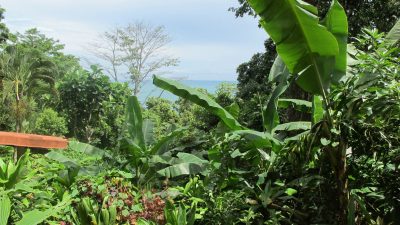
However, it needs to be noted that a trip during this time of the year doesn’t mean that you’ll be stuck inside your room the entire duration of your visit. In fact, most of the rain comes in quick, yet heavy, showers. Generally they occur during the mid afternoon, making it so that you can work around Mother Nature. If you do happen to be out and about when a rain shower hits, all you have to do is find cover and wait it out. Most travelers opt to pack a rain coat in their luggage for such an event or to buy one from a local gift shop.
Unfortunately, if you’re thinking of visiting the beautiful Osa Peninsula during this time of year, you’ll want to cross it off your list and instead plan your peninsula adventure for next year’s summer visit. This area receives an exceptionally large amount of rainfall, thus causing many of the lodges to close for the season.
High-season Costa Rica: December, January, February, March, and April
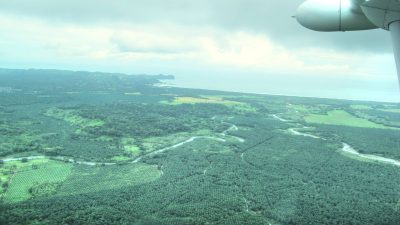
Activity rates are noticeably higher during the high-season, but that doesn’t seem to deter visitors from booking their long awaited fishing trip or zip lining adventure. One thing to keep in mind is that when visiting during the high-season, also referred to as the dry season, you’re much more likely to be able to transverse some of the more serious jungle hikes. This is because a lack of rain (or at least as strong decrease) allows the pathways to dry up, creating a more stable foot path. The rivers in Costa Rica tend to have a lower water line during this time of year as well, though none of them should be crossed without a guide and boat as there are hidden wildlife dangers in each one. Because fresh water is more concentrated during this portion of the year, those searching for wildlife will have an easier time finding it.
Group tour season in Costa Rica: January, February, and March
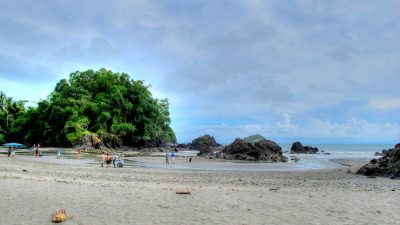
Christmas and New Years in Costa Rica also tends to be busy
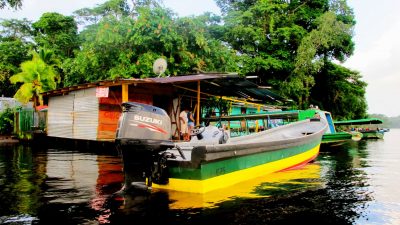
San Jose Climate
| Jan | Feb | Mar | Apr | May | Jun | Jul | Aug | Sep | Oct | Nov | Dec | |
|---|---|---|---|---|---|---|---|---|---|---|---|---|
| High °F | 82 | 84 | 86 | 87 | 84 | 83 | 83 | 83 | 82 | 81 | 81 | 82 |
| Low °F | 65 | 66 | 66 | 66 | 59 | 60 | 60 | 61 | 60 | 60 | 58 | 58 |
| Precip “ | 0.2 | 0.4 | 0.5 | 3.1 | 10.5 | 11.0 | 7.1 | 10.9 | 14.0 | 13.0 | 5.3 | 1.3 |
| High °C | 28 | 29 | 30 | 30 | 28 | 28 | 28 | 28 | 27 | 27 | 27 | 28 |
| Low °C | 19 | 19 | 19 | 19 | 19 | 19 | 19 | 19 | 18 | 19 | 18 | 18 |
| Precip cm | 0.63 | 1.02 | 1.38 | 7.99 | 26.8 | 28.0 | 18.2 | 27.6 | 35.5 | 33.1 | 13.5 | 3.4 |
Guanacaste Climate
| Jan | Feb | Mar | Apr | May | Jun | Jul | Aug | Sep | Oct | Nov | Dec | |
|---|---|---|---|---|---|---|---|---|---|---|---|---|
| High °F | 91 | 95 | 95 | 96 | 93 | 89 | 89 | 89 | 87 | 87 | 87 | 88 |
| Low °F | 69 | 69 | 71 | 73 | 79 | 73 | 73 | 73 | 71 | 71 | 89 | 89 |
| Precip “ | 0.1 | 0.1 | 0.2 | 0.9 | 7.6 | 9.7 | 6.0 | 8.2 | 13.6 | 12.2 | 3.9 | 0.5 |
| High °C | 33 | 35 | 35 | 36 | 34 | 32 | 32 | 32 | 31 | 31 | 31 | 31 |
| Low °C | 21 | 21 | 22 | 23 | 26 | 23 | 23 | 23 | 22 | 22 | 32 | 32 |
| Precip cm | 0.3 | 0.3 | 0.5 | 2.3 | 19.0 | 24.3 | 15.0 | 20.5 | 34.0 | 30.5 | 9.8 | 1.3 |
Annual events in Costa Rica to be aware of
Costa Rica plays hosts to several different festivals and events throughout the entire year. We’ve gone ahead and detailed the events that are most likely to affect your travel and booking plans, below. You’ll also note that many of these festivals are religious in nature.
Public Festival of Palmares (Last two weeks of January)
Also known as the Palmares fiestas, the Public Festival of Palmares is located in the small town of Palmares during the last two weeks of January each and every year. During this time the town plays hosts to a number of concerts, sporting activities, firework shows, bullfighting (bloodless) and a horse parade. You’ll also find lots of different tents offering food and alcohol. Be prepared for fully booked hotels and crowded streets.
The International Festival of Arts (Last two weeks of March)
Occurring every other year during the last two weeks of March, the International Festival of Arts attracts artists from around the world to San Jose and other towns throughout the country. Prepare for fully booked hotels in each location, especially San Jose.
Independence Day (September 15)
This holiday is not only celebrated in Costa Rica, but the rest of Central America as well. At 6:15pm exactly, Costa Ricans across the country will stop what they are doing and sing the national anthem. In addition, a torch is brought down from Nicaragua to Cartago by relay runners. Parades and festivals can also been found around the country.
Carnival of Limon (October 12)
This event is hosted by Limon, a coastal town on the Caribbean coast of Costa Rica. Here you’ll witness parades, dances and a few concerts. This festival won’t really affect your Costa Rican vacation unless you are staying in Puerto Limon that day and the day before and after.
San Jose-Zapote Fair (December 25-31)
Located in San Jose, this fair takes place at the Zapote marketplace. Here you’ll find snack stalls, fireworks, various rides for all ages and bloodless bullfights. If you’re traveling with your children during this time of year, you’ll find a few hours here is worth your time before you move on to your next Costa Rican destination.
Light Festival- Festival de la Luz (Second Saturday in December)
Held on the second Saturday in December every year, this festival is characterized by a Christmas parade. But this isn’t just any parade. Unlike other more traditional holiday parades, this one features thousands of cars that have been decorated with lights. You’ll find this festival runs along Paseo Colon and Avenida 2 in San Jose. Because this festival is very popular, you’ll find locals from around the country flocking to San Jose. This means fewer hotel rooms to choose from.
Where to go in Costa Rica
Considering the small size of Costa Rica, you might assume that they are only a few places to visit. Luckily, this isn’t the case and instead there are lots of great choices ranging from the Pacific coast all the way over to the Caribbean Sea.
Santa Elena and the Monteverde Cloud Forest
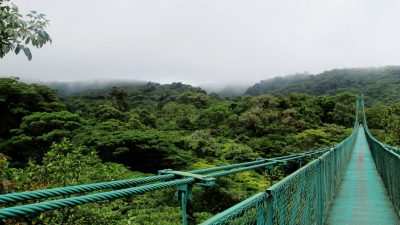
Quepos and Manuel Antonio National Park
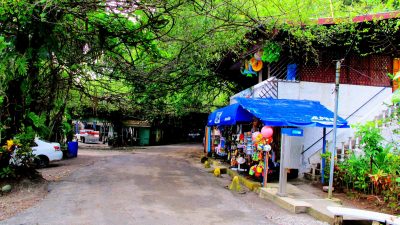
La Fortuna and Arenal Volcano National Park
Even though you’ll find hoards of tourists here, La Fortuna is a must visit for many traveling to the county. This is because, even though the town itself doesn’t have much going on, it’s the gateway to Arenal Volcano National Park. Here you’ll find lots of hiking trails and viewpoints. If one of the reasons you’re visiting Costa Rica is so that you can capture some beautiful landscape images, then you’ll find plenty of angles to play with here. You’ll also find a waterfall and hot springs to relax in. If you’re a foodie on the hunt, you might be surprised to find that La Fortuna actually boasts a wide selection of dining options as well. This means that if you’re tired of eating pizza or rice and beans, you’ll be able to sample other dishes easily. Because there are so many adventure options right outside of town, most who visit plan three to four days here.
Tortuguero and Tortuguero National Park
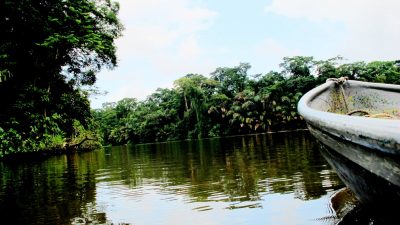
Tamarindo and the Tamarindo National Wildlife Refuge
Located in the Guanacaste Region, Tamarindo is a popular town to visit. Here you’ll find lots of great activities to choose from including sport fishing, horseback riding, scuba diving, swimming and snorkeling. Nearby you’ll also find surfing (and many surfing competitions) and the Tamarindo National Wildlife Refuge. If visiting the refuge is something you’re interested in doing, you’ll find plenty of tours to choose from. A few days in town should give you lots of time to see everything before exploring another region.
>>>Tamarindo and Guanacaste prices and advice
The Capital of Costa Rica: San Jose
Though you don’t have to fly into San Jose to visit the country, the capital is generally where you’ll find yourself as the airport offers a large range of flights in and out of the United States. With that said, San Jose is not a particularly pretty city and there are some parts of it that are susceptible to heavy crime. Ideally, you’ll want to fly into the city and then quickly take a ride or domestic flight to another town. If you do decide to stay in San Jose for a day or two, you’ll find lots of accommodation options varying from hostels to large resorts.
>>>San Jose prices and advice
